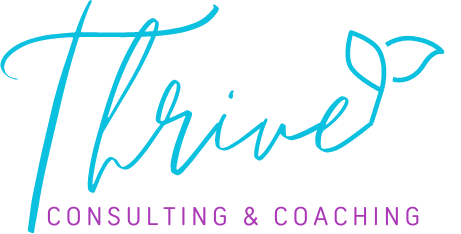Healthcare systems nationwide face a projected shortage of more than 3 million healthcare professionals in the coming years. This crisis affects the entire industry.
The numbers paint a stark picture of why healthcare retention strategies matter now more than ever. This staffing crisis extends far beyond U.S. borders. A worldwide shortage of 5.9 million nurses and 4.3 million doctors has created an unprecedented global healthcare staffing emergency that needs immediate action.
Money tells an equally troubling story. A single registered nurse costs between $28,400 to $51,700 to hire and train. International recruitment pushes these costs even higher – up to $88,000 per vacancy. Staff resignation rates in European countries, including the UK, have surged from 5% to 17% in just three years.
A perfect storm brews in healthcare. The U.S. Census Bureau projects 22.9 million more seniors by 2034. This aging population will clash with a projected shortage of up to 86,000 physicians in the next 12 years. The industry will also need over one million nurses by 2030.
This detailed piece explores proven retention strategies that deliver results. We’ll look at everything from preventing burnout to creating flexible schedules and career growth opportunities. These expert solutions will help you build a stronger healthcare workforce for 2025 and beyond, whether you’re battling high turnover or strengthening your current retention plan.
Assessing the Root Causes of Turnover
Healthcare organizations need a solid retention plan that starts with understanding why staff leave. The industry’s turnover rates range from 10.1% to 50%. Replacing a single nurse costs between $44,000 and $88,000. Physician recruitment costs even more, ranging from $88,000 to $1,000,000 per physician.
Understanding burnout and moral injury
Burnout has reached epidemic levels in healthcare, affecting up to 60% of workers. This syndrome comes from intellectual, physical, and emotional exhaustion due to constant workplace stress. Many clinicians now prefer the term “moral injury” over “burnout.” This concept shows how the healthcare system’s focus on profits over patients demoralizes staff.
Moral injury has two main parts: betrayal by legitimate authority in high-stakes situations and going against deeply held moral beliefs. Burnout happens when resources don’t match demands. Moral injury occurs when healthcare workers can’t act in their patients’ best interests because they must compromise their professional ethics.
Research shows a 0.57 correlation between burnout and moral injury prevalence. Some people experience just one condition, while many suffer from both. Moral injury independently affects staff’s decision to leave and can make burnout symptoms worse.
Identifying gaps in leadership and communication
Leadership plays a huge role in keeping staff. An April 2025 survey revealed workplace appreciation from leaders as the top factor in healthcare professionals’ career satisfaction. Good leadership reduces burnout by promoting health, boosting motivation, cutting job stress, and helping well-being.
Leadership gaps that push staff to leave include:
- Poor communication between nurses, managers, and administrators
- Nurse managers who aren’t available or interested
- Not enough recognition for staff efforts
- Poor support for work-life balance
- Staff feeling betrayed when understaffing concerns get ignored
Only 20% of healthcare employees think their organization cares about their long-term career success. This gap between what management intends and what employees experience is a basic problem any retention strategy must fix.
Analyzing exit interviews and turnover data
Exit interviews are a great way to get insights about why staff leave. This practice started over 50 years ago. It usually involves talks between leaving employees and HR about policies, atmosphere, and how things work.
Exit interviews are common but their effectiveness isn’t certain. People leaving might not tell the real reasons, especially if there’s conflict. But well-done exit interviews can help:
- Identify trends in turnover causes
- Pinpoint systemic issues needing attention
- Guide organizational improvements that improve retention
Looking at turnover data means going deeper than just “personal reasons.” The 2024 National Health Care Retention Report lists relocation, career advancement, retirement, and education as main reasons people leave. Other big factors include scheduling problems, pay issues, commute difficulties, working conditions, and workload.
AI and machine learning now help predict turnover risk by analyzing various data. These tools can find patterns in HR records and unstructured data like social media sentiment and employee feedback, giving better insights into why people leave.
Healthcare organizations can create targeted retention strategies by really understanding these root causes of workforce turnover.
Strengthening Internal Culture and Retention
Building a resilient internal culture is the life-blood of any successful healthcare retention strategy. Healthcare organizations must take concrete steps to strengthen their work environment after they identify why turnover happens.
Improving team communication and transparency
Communication directly affects patient safety and staff satisfaction. Communication failures add substantially to medical errors. These errors would rank fifth among the top causes of death in the United States—ahead of accidents, diabetes, and Alzheimer’s disease. Critical information gets lost, orders are misinterpreted, and changes in patient status go unnoticed when proper communication channels don’t exist.
Healthcare teams need to break down hierarchical barriers because hierarchies often stop staff from speaking up about problems. Structured communication tools like SBAR (Situation, Background, Assessment, Recommendation) can remove guesswork from clinical staff communications. Healthcare leaders should:
- Promote open dialog through shared rounds and team briefings
- Create interdisciplinary committees to discuss problem areas
- Implement standard behavior policies that apply universally
- Develop safe reporting systems where staff can voice concerns without fear of retaliation
Transparent information sharing between teams promotes trust and allows teams to spot problems early. Research shows that poor communication hurts patients’ view of a hospital’s clinical effectiveness and their willingness to return for care.
Creating a culture of recognition and support
Employee recognition programs bring substantial benefits for retention. Organizations with formal recognition programs see 14% higher engagement, productivity, and performance than those without such programs. Staff who feel recognized are 2.7 times more likely to be highly engaged.
Recognition needs to be meaningful and personal. A simple “thank you” for daily efforts satisfies 85% of employees. However, detailed recognition programs should include various approaches:
- Management recognition to show that people are seen and valued
- Peer recognition to build camaraderie and improve team communication
- Patient and family acknowledgments to reinforce purpose and meaning
The effect on retention is clear—organizations that prioritize appreciation have workers who are 56% less likely to look for their next job. Without doubt, better employee satisfaction associates with improved patient experience scores and a 15% increase in patient safety.
Reducing mandatory overtime and workload imbalance
Mandatory overtime adds substantially to staff burnout and turnover. Multivariable analysis shows mandatory overtime has a significant relationship with intent to leave (β = 0.395). It also increases the incidence of musculoskeletal disorders, injuries, and illnesses.
The nurse turnover rate in the United States reaches as high as 27.65%, partly due to unsustainable workloads. High workload creates greater levels of burnout. This affects job satisfaction and patient care quality.
Healthcare organizations should take these steps to curb these issues:
- Stop mandatory overtime except in truly exceptional circumstances
- Study workload patterns to identify peak periods requiring additional staffing
- Balance workload between different groups of employees
- Implement flexible working hours and family-supportive policies
Mandatory overtime isn’t the only answer to staffing shortages. In stark comparison to this, forcing healthcare workers to work overtime makes burnout worse, lowers job satisfaction, and ironically worsens staffing shortages through increased turnover.
Healthcare organizations can create environments where staff feel valued, supported, and motivated to stay by deepening their commitment to internal culture through better communication, meaningful recognition, and balanced workloads.
Flexible Scheduling and Work-Life Balance
Healthcare organizations have found flexible scheduling to be an effective way to recruit and keep staff. Their staffing levels and employee satisfaction have improved greatly. A healthcare system that started offering flexible schedules saw a 20% increase in nurse staffing over two years, reaching a 94% fill rate.
Offering shift options and self-scheduling
Self-scheduling has reshaped workforce management in 2025. Healthcare workers can now pick their own shifts. This gives them better control over their work-life balance. A 2023 survey shows that 87% of nurses would rather choose their schedules than have managers create them.
The process works like this:
- Management figures out staffing needs based on patient numbers
- Digital platforms show available shifts
- Staff picks shifts that fit their schedule
- Supervisors check to ensure enough coverage
Many healthcare facilities now use apps that show open shifts and their pay rates. Staff can choose based on what matters most to them – whether that’s earning more from high-demand shifts or getting time off for family.
These flexible scheduling models work well:
- Staggered shifts that start at different times (9am-9pm, 11am-11pm)
- Team scheduling where groups work the same block through a schedule period
- Split positions letting nurses work in different care areas
- Specialized assignments for specific tasks like admissions/discharges
“There is not a one-size-fits-all approach,” a nursing operations director points out. Each unit needs its census trends, staffing ratios, and peak times checked before new schedules start.
The benefits go beyond happy employees. Managers spend less time making schedules and handling shift swaps. Teams talk more as they work together to arrange their schedules.
Flexible scheduling helps attract new talent too. Job seekers see these options as a sign that the organization values independence and understands work-life balance.
Encouraging PTO and mental health days
PTO policies play a vital role in keeping healthcare workers in 2025. Many facilities see burnout causing high turnover. Good PTO helps attract quality candidates.
Mental health days have become essential as healthcare workers deal with extreme stress. These breaks let them:
- Exercise and stay active
- Rest and recharge
- Talk to mental health professionals
- Spend time with loved ones
- Follow their interests and hobbies
Mental health days help organizations too. Stress often leads to lower productivity and team conflicts. After these breaks, workers come back refreshed and more motivated.
A good PTO policy should have:
- Clear rules that apply to everyone
- Set amount of time off (most Americans say they need a week for mental health)
- Simple request process
- Clear rules about not working during time off
“Policies should make it clear to employees that you want them to use paid leave to improve their mental health,” says an industry expert. Good PTO and flexible schedules show staff that their wellbeing matters.
Healthcare leaders should work with HR directors and operations managers to create plans that meet both organization and staff needs.
Professional Growth and Career Pathways
Professional development is the life-blood of healthcare retention strategies. Career growth opportunities directly affect staff satisfaction and longevity. Healthcare organizations use structured advancement pathways to curb the ongoing staffing crisis.
Implementing mentorship and residency programs
New nurses face many challenges when transitioning from student to practicing professional. Nurse residency programs have become a vital solution. Some facilities have boosted their retention rates to 95% at the one-year mark. These programs help new nurses and benefit the entire organization.
Successful nurse residency programs need several key elements:
- Organizational leadership support and endorsement
- Dedicated coordinators and facilitators
- Evidence-based practices informed by research
- Structured staged development across time
- Regular performance evaluation against measurable outcomes
“Going from student nurse to professional nurse isn’t an easy transition,” notes one clinical educator. Properly structured programs help new graduates build confidence and skills gradually.
Mentorship value extends beyond new graduates. One healthcare leader explains, “The exchange of ideas and experiences during mentoring sessions cultivates a dynamic learning environment that benefits both mentor and mentee”. These relationships often last beyond the original program periods and encourage long-term professional growth.
Providing continuing education and certifications
Healthcare professionals need continuing education to stay current with medical advancements, regulatory changes, and management practices. The Centers for Disease Control and Prevention offers ten types of continuing education free of cost. These are accessible in various formats like live courses, conferences, webcasts, and enduring materials like podcasts and journal articles.
Certifications offer solid proof of expertise and commitment to excellence. Healthcare administrators with specialized credentials recognized by the Board for Healthcare Administration earn up to $40,000 more annually than their non-certified peers. Certification programs serve multiple purposes:
- Proving expertise to current and potential employers
- Showing commitment to professional growth
- Improving job security and advancement opportunities
- Creating pathways to higher compensation
“New skills and new certifications open doors to new opportunities,” reports one industry source. These credentials help professionals stand out in the competitive healthcare landscape, whatever their years of experience.
Creating leadership development tracks
Modern healthcare organizations know they need to develop leadership capabilities at all levels. A well-structured leadership track needs several vital components:
- Assessing current leadership abilities
- Setting personalized development goals
- Measuring progress and results consistently
Leadership development programs create more efficient operations, positive cultural changes, and better talent retention. Leadership skills make healthcare providers more willing to join team care and help sustain collaborative approaches.
Leadership programs should match organizational goals while involving senior leadership in the development process. One expert points out, “A new type of leader is emerging in healthcare, namely one who focuses on teamwork, improving patient outcomes and models the balance between autonomy and accountability”.
Healthcare organizations create powerful retention strategies through detailed professional growth pathways. These include residency programs, continuing education, and leadership development that address staff needs at every career stage and build a stronger foundation for future success.
Smart Recruitment Strategies for 2025
Healthcare organizations must retain their current staff and attract new talent to thrive in the future. The right recruitment approach plays a significant role as the industry faces a projected shortage of up to 100,000 workers by 2028.
Partnering with educational institutions
Educational partnerships build sustainable talent pipelines that fill workforce gaps. Modern healthcare organizations invest in scholarship programs that cover tuition, certification fees, and monthly stipends for basic living expenses. These partnerships include:
Adjusted clinical training models tackle preceptor shortages through clinical teaching associate programs. Experienced nurses serve as adjunct faculty. Students pair up with seasoned clinical mentors for hands-on bedside training experiences.
Programs work best when you have structured healthcare exposure targeting high school students to create long-term talent pipelines. Rural healthcare benefits from mobile health clinics that let students gain clinical experience while serving communities in need.
Hospitals and health systems should think about regional approaches that support growth in health professional training and education. These programs line up future workforce needs with educational capacity. They also boost graduation rates and post-graduate employment while attracting motivated students from diverse backgrounds.
Using employer branding to attract talent
The digital world has healthcare organizations turning to online platforms for recruitment. The move from traditional methods to digital solutions comes from the need for speed, accuracy, and wider reach in a competitive market. Digital platforms offer quick and flexible ways for recruiters to tap into global talent pools.
A welcoming employer brand shows that the organization values diversity and promotes an environment where everyone thrives. Organizations that run ongoing training and development programs about diversity see higher retention rates and lower hiring costs over time.
Social media has become vital in recruitment, with LinkedIn and Twitter helping organizations share their values. Job seekers research extensively before applying. They use social media, company profiles, and career sites to understand a company’s mission, values, and culture. This helps companies involve qualified candidates while guiding others to more suitable opportunities.
Offering student loan repayment and tuition support
Student loan repayment programs attract talent effectively. The National Health Service Corps Students to Service Loan Repayment Program offers up to $120,000 for medical, nursing, dental, physician assistant or nurse practitioner students in their final year. The NHSC Loan Repayment Program provides up to $80,000 for primary care, dental, and behavioral health clinicians who commit to 2-3 years at eligible sites.
Many state programs exist beyond federal options:
- Washington Health Corps supports licensed health professionals serving in critical shortage areas
- Nurse Educator Loan Repayment specifically targets nurses with advanced degrees
- Training Fund members can receive up to $5,250 annually in tuition assistance
- RN members may qualify for additional scholarships up to $3,000
Healthcare professionals pay an average of $344 monthly in student loans, and 37% carry student debt. Organizations gain a competitive edge in recruitment by addressing this financial burden through loan repayment benefits.
Public service employees in healthcare can use the Public Service Loan Forgiveness program. It forgives remaining Direct Loan balances after 120 qualifying monthly payments. On top of that, organizations can contribute directly to employees’ student loans or verify loan payments to support matching contributions to retirement accounts.
Healthcare organizations can tackle staffing challenges and build lasting talent pipelines for 2025 and beyond through strong educational partnerships, compelling employer branding, and detailed loan repayment programs.
Leveraging External and Global Talent Pools
Your existing workforce needs support, and external talent pools provide quick solutions to fill critical staffing gaps.
Hiring travel nurses for short-term needs
Travel nurse assignments last 13 weeks and give healthcare facilities the flexibility they need when patient numbers change. This market has grown remarkably from $6.50 billion in 2019 to $25.60 billion in 2023, after reaching its peak at $42.70 billion in 2022. Travel nurses do more than fill staffing gaps – they bring valuable experience from different healthcare settings that often leads to better care quality.
Learning about international recruitment alliances
Healthcare systems now look to global talent pools more frequently. Medical boards in 18 states have created alternative licensing paths for internationally-trained physicians, while other states plan similar changes. Healthcare facilities can verify international credentials effectively through mutually beneficial alliances with organizations like CGFNS. Minnesota’s program shows great results – 15 internationally trained medical graduates have entered residency programs.
Ensuring compliance with visa and licensing laws
Regulatory requirements create complexity in the process. International healthcare workers must get certification from USCIS-approved organizations that verify their education, training, licensure, and English skills. The Nurse Licensure Compact (NLC) makes domestic mobility easier, with 43 jurisdictions participating by 2025. State licensure pathways exist, but immigration challenges often limit the process.
Conclusion
Healthcare organizations struggle to keep their valuable workforce. This piece outlines practical ways to curb the expected shortage of millions of healthcare professionals worldwide. Quick fixes won’t work – leaders must take an integrated approach to keep their staff.
The first priority is dealing with burnout and moral injury. A strong internal culture helps staff feel valued through better communication, meaningful recognition and balanced workloads. Staff scheduling flexibility, especially when teams can schedule themselves, has showed great results in attracting and keeping employees.
Growth opportunities are without doubt powerful motivators for healthcare professionals. Organizations can build resilience by offering mentorship programs, education support, and clear paths to leadership. These satisfy people’s natural desire to grow. Smart hiring approaches, especially through partnerships with schools and student loan support, help build a stronger talent pipeline.
Healthcare organizations should carefully add travel nurses and international recruits while following compliance rules. These approaches create a complete retention plan that helps with immediate staffing needs and long-term stability.
Keeping healthcare staff needs both committed leaders and concrete actions. The road ahead looks tough, but organizations that use these proven strategies will definitely build stronger teams that deliver great patient care despite ongoing pressures. Best of all, they’ll create places where healthcare professionals can grow while having the work-life balance they need for lasting careers.



